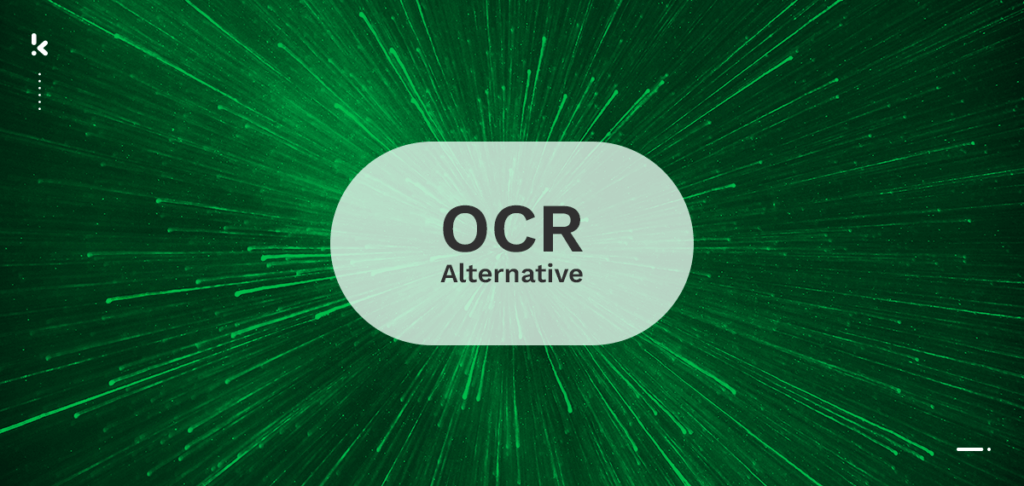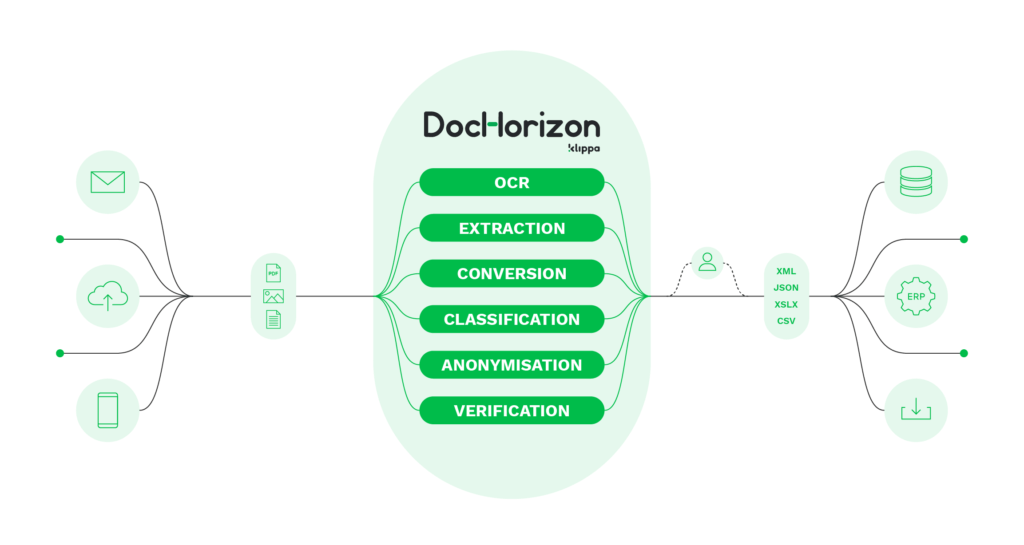

Whether you want to extract dates and amounts from invoices or are searching for product line items on receipts, one of the first OCR solutions you will find online is Tesseract. Tesseract is one of the first serious open source OCR engines developed.
The software dates back to 1985 when development was started by Hewlett-Packard as a commercial solution. In 2005, it eventually became an open source project and since then Google has supported its development for a number of years.
Over the last years, development has come to a halt as many software companies developed alternative OCR solutions. These commercial solutions are not free, but if you are looking for a mature solution that is continuously improving, and incorporates machine learning and artificial intelligence (AI), then we have the best alternative to Tesseract for you.
But let’s first shortly discuss what Tesseract is, why you should and shouldn’t use it, and then go through the five best alternatives to Tesseract OCR.
What is Tesseract?
As mentioned, Tesseract is an open source OCR software that can be used to extract text from images. “Out of the box” it can recognize more than 100 languages and it is compatible with many programming languages and frameworks.
One of Tesseract’s advantages is that it can be wrapped and coupled with Python OCR libraries, which gives users access to benefits such as PDF data extraction, real-time Computer Vision (CV), and image processing features.
Why should you use Tesseract?
Tesseract comes with a couple of features that make the software perfectly suitable for a certain target group. If you don’t want to or can’t invest money in OCR software, then Tesseract could be a great option. It is free to use, as it is an open source software.
Tesseract offers great documentation, which makes it easy to implement the software into your system. If you are still left with questions, many other users can help you with the setup, as the software is used by a wide range of offices. The software is often used as an automated data entry, digital client onboarding, and automated invoice processing solution.
Cons of using Tesseract
While Tesseract is suitable for some use cases, it also has significant limitations. To make the software work for you, you will have to manually write code yourself, which means a lot of time and resources need to be invested. In most cases, development takes much longer until you can use the OCR solution as there is no support from developers.
On top of this, not every document type is supported, which quickly leads to errors and low accuracy rates compared to more advanced solutions. Furthermore, Tesseract doesn’t automate other document processes such as verification and cross-check validation as it lacks further development and the integration of AI.
Maybe you have already experienced those limitations yourself and are now searching for an alternative solution. This is why in the next section we will introduce five Tesseract alternatives, of which three are open source as well and two are offered as a paid service.
Top 5 best Tesseract alternatives
In the following, we will discuss five alternatives to Tesseract:
- Klippa DocHorizon
- GImageReader
- OCR4all
- OpenScan
- Kofax OmniPage
#1 Klippa DocHorizon
Klippa DocHorizon combines OCR with advanced AI technologies. As an Intelligent Document Processing (IDP) software, it is capable of scanning, classifying, anonymizing, extracting, and verifying data.


The software solution is primarily cloud-based but is also available as an on-premise deployment. Klippa DocHorizon allows users to submit documents via email, web, or mobile apps, helping organizations save up to 95% of their current manual document processing time.
In general, the IDP solution helps businesses in various industries such as Accounting, Financial Services, Marketing, Banking, and Loyalty to automate data entry. When using Klippa DocHorizon, businesses in these industries can capture images, extract data, anonymize sensitive data, classify documents, and convert documents into searchable files.
Pros of Klippa DocHorizon
- Fields and line items capture
- EU and US Infrastructure
- Cloud and On-premise deployment
- Picture and signature extraction
- Data masking
- Image preprocessing
- Standard SLA
- Send files anytime, anywhere
- Integrable via API or SDK to third-party applications
- Document and data classification
- Cross-check with 3rd party databases
Cons of Klippa DocHorizon
- No support for non-Latin alphabets
- No document storage
Klippa DocHorizon is best used for
- Financial documents (invoices, receipts, etc.)
- Identity documents (passports, ID cards, driver’s license)
- Retail documents
#2 GImageReader
GImage Reader is a free-of-charge OCR application that allows users to open images and PDF files with ease. After a document is opened, users can select any area of an image or PDF file and extract the necessary text.
Pros of GImageReader
- Multiple images can be processed in one go
- Open source
- Supports document customization
- Integrates with Tesseract OCR language
Cons of GImageReader
- No advanced customization possible
- No data anonymization
- Limited to images and PDF files
GImageReader is best used for
- PDF documents
- Images
#3 OCR4all
With OCR4all, various open source solutions are combined, which provides the user with a fully automated workflow for automatic text recognition. OCR4all intends to offer its service specifically to non-technical users.
Pros of OCR4all
- Open source OCR tool
- Flexible application to many document types (from manuscripts to printings)
- Easy cross-platform deployment
Cons OCR4all
- Manual annotation of text elements with the LAREX editor
- Apple devices with an M1 / M2 chip are not supported yet
- The installation and start of Docker seems to be a frequent problem
- No data anonymization
OCR4all is best used for
- Images
#4 OpenScan
With OpenScan users can scan hard copies of documents and notes and convert those to PDF or JPEG files. It is an open source app with the motto “No ads. No data collection. We respect your privacy.”.


Pros of OpenScan
- Focused on data privacy
- Ad-free
- Easy PDF signing
- Built-in preview viewer
- Allows you to fill in PDF forms
- Mobile phone as a mobile scanner
Cons of OpenScan
- Limited to PDF documents
- No data extraction possible
OpenScan is best used for
- PDF documents
#5 Kofax OmniPage
Kofax OmniPage is an OCR software that is able to automate the extraction of data from high volumes of PDF documents. It is specialized in table extraction and line item matching. Kofax’s intelligent automation platform helps organizations transform information-intensive business processes.


Pros of Kofax OmniPage
- Recognizes over 120 languages during document processing
- Use of mobile scanners, desktop scanners, all-in-one printers, and multifunction printers
- Search, edit, and access documents on any device
- Fields and line items capture
- Document storage
Cons of Kofax OmniPage
- The user interface could be improved
- No cross-checks with 3rd party database
- No European Infrastructure
- No on-premise deployment is available
- No signature and picture extraction capability
- No data masking
Kofax OmniPage is best used for
- Invoices
- Receipts
- Purchase orders
Why is Klippa DocHorizon the best alternative to Tesseract?
With Klippa DocHorizon, organizations around the world are able to automate document-related workflows. With our AI-based software, you are able to accurately extract data from unstructured data formats (e.g., PDFs) and on top, verify and anonymize those.
Klippa DocHorizon aims to eliminate manual data entry and help organizations save time, cost, and resources. Our solution is available via API and SDK and includes the following benefits:
- Data extraction → Real-time data extraction of important information
- Mobile scanning → Documents can be scanned with mobile devices at any time, at any place
- OCR → Documents can be turned into text and structured machine-readable formats
- Classification → Documents can be classified and sorted according to your needs
- Anonymization → Sensitive data can be masked or removed, protecting you and your customers from data breaches
- Document conversion → Unstructured document formats such as JPG, PNG, and PDF can be converted to searchable text, and then exported to structured machine-readable formats such as CSV, XLSX, XML, and JSON.
- Verification → The authenticity and validity of documents and data can be verified
Do you want to know more about our solution and how it can serve as a Tesseract alternative? We would be happy to show you how our software works. Simply book a free demo down below or contact one of our experts.